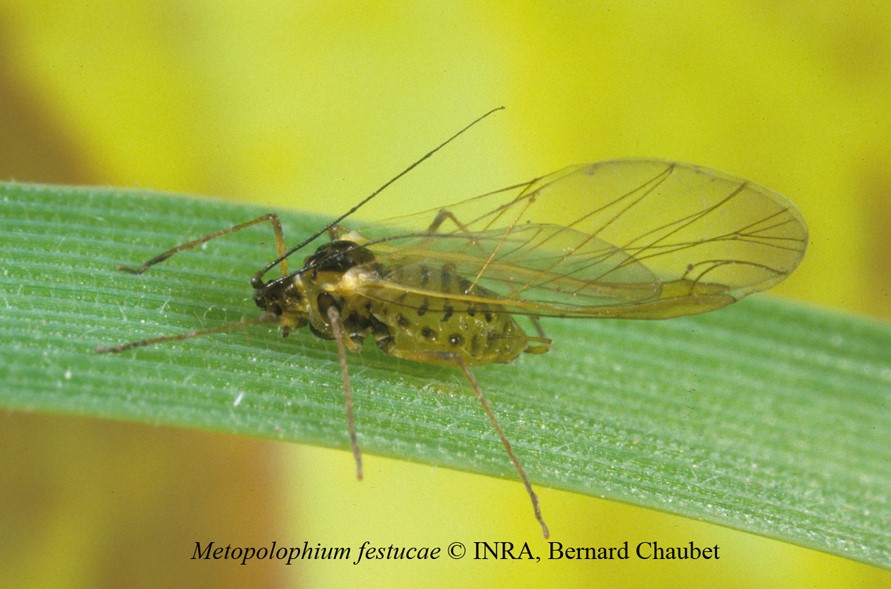— by Dr. J.P. Michaud — Hays, KS
In 1982, Stroyan distinguished a subspecies of Metopolophium festucae, sensu stricto, as M. f. cerealium based on morphological characters. Whereas the former subspecies infests various wild grasses and is only incidental on grain crops, the latter is a potentially significant pest of cereals, especially wheat. Although this aphid complex has been present in North America since the 1970s, it was not until 2011 that significant M. f. cerealium infestations of wheat (as well as barley and oats) were discovered in the Pacific Northwest. The winged adults are pale yellowish with dark markings on the dorsal surface (Fig. 1), whereas apterae are pale yellow, similar in color to sugarcane aphids, but with a more elongate body shape (Fig. 2).
Fig. 1
Fig 2
On the morning of May 17, 2018, we collected a number of winged M. f. cerealium using a sweep net in wheat plots on the Agricultural Research Center-Hays. Other aphids present included Sitobion avenae and Rhopalosiphum padi, but all three species were present in low numbers, and were attended by the usual complex of aphid predators. It should also be noted that apterous M. f. cerealium were not found, so the winged forms are most likely very recent migrants. It is quite possible that existing biological controls will maintain this new aphid below economic levels along with all the other species present in wheat, but farmers should be vigilant for possible outbreaks in particular fields, especially later-maturing varieties that will give the aphids more time to feed and increase their numbers. It is also possible for these aphids to move to spring oats and barley after winter wheat matures.

